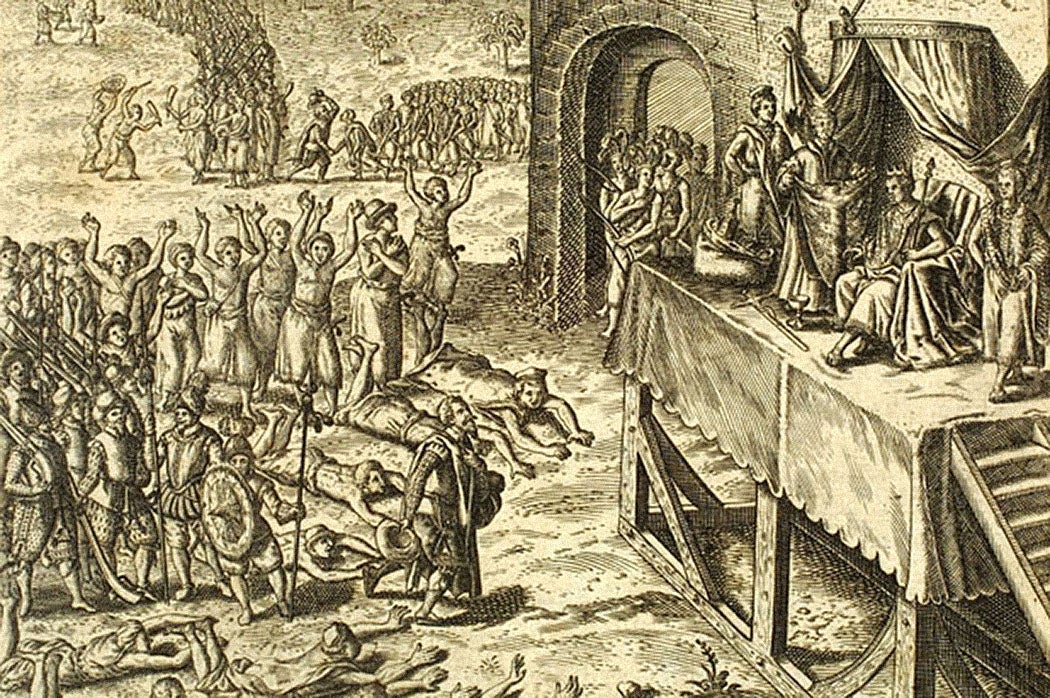Between the sixteenth and nineteenth centuries, the slave trade transformed African nations in profound and devastating ways. As historian Fikru Gebrekidan writes, we can see some of the diversity in how this played out by looking at the relationships among three Christian kingdoms: Congo, Ethiopia, and Portugal.
Gebrekidan notes that when Portugal established contact with Congo and Ethiopia around the turn of the sixteenth century, the three kingdoms had much in common, including similar levels of material development, systems of divine kingship, and belief in magic. Both African kingdoms exchanged ambassadors and trade goods with Portugal and sent students and interpreters to Europe.
Enslavement was a common institution around the world at this time, but enslaved people in Africa generally didn’t make up a permanent underclass. They might be war captives, debtors, or those banished from their home society for a serious crime. In Ethiopia, they could gain freedom in various ways, including becoming a priest or a soldier with their masters’ permission. In parts of Congo, they weren’t expected to do more work than free people, could hold office, and might marry into the host society.
But, as Portugal established increasingly strong positions in Africa, the slave trade intensified and changed in its character. Portuguese traders paid no mind to traditional guidelines that allowed enslavement only of people from a social or religious outgroup, kidnapping Africans indiscriminately and sending them to horrific fates in distant lands.
Gebrekidan writes that the increasingly aggressive slave trading affected Congo and Ethiopia very differently. Congo was located in an area often traversed by Europeans, and it was relatively easy for the Portuguese to get military backup from its colonies of Angola and Sao Tome, or even by sea from Portugal. This left the Congolese vulnerable to human trafficking. As early as 1526, Congo’s King Afonso I wrote to King João III of Portugal complaining that slave trading had devastated his kingdom and calling for the Portuguese to cease the practice. But the transatlantic slave trade only intensified.
This transformed slavery within Congo, too. People committing minor offenses might be enslaved within their own society, or they might be sold away to foreigners. The status of slaves became so degraded that leaders sometimes killed captives simply as a demonstration of their wealth and power.
Weekly Newsletter
In contrast, Ethiopia’s geography made it less vulnerable to Portuguese forces. This made it possible for Emperor Facilidas to successfully expel the Europeans from the country in 1632. While enslavers wreaked havoc in the East African territories around Ethiopia well into the nineteenth century, the kingdom itself remained relatively stable. And, although it did not participate in the slave trade itself, it profited by taxing enslavers along its outskirts.
The upshot, Gebrekida writes, was that, by the time the scramble for Africa began in the nineteenth century, Congo was destabilized, depopulated, and unable to mount a strong resistance. Ethiopia, on the other hand, successfully staved off colonizers, becoming a symbol of African self-determination.







